THE LIFE OF A COW | THE HORRIFIC TRUTH ABOUT DAIRY FARMING.
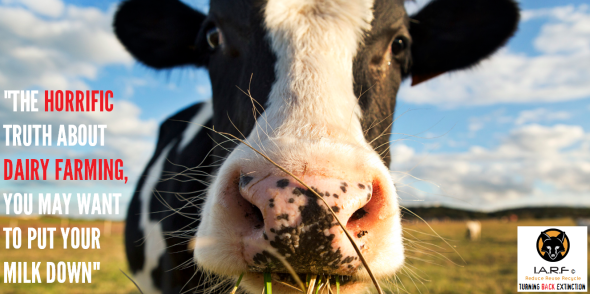
THE HORRIFIC TRUTH ABOUT DAIRY FARMING
Firstly I’d just like to explain, this is the very first article I’ve written in relation to “animal rights”. 100% of my articles are based on nothing but conservation and environmentalism. However I cannot any-longer ignore this side of animal welfare or rights; finally there is only one person that inspired me to write this article, and from listening to that individual, reading and the viewing footage which that individual sent to me. It has led me to investigate this side of animal welfare and agriculture more.
The dairy industry is horrific, something that many people are unaware of, or are aware yet chose to ignore the sadistic industry, because after all its just an animal. I think that’s the depressing side of things, when people chose to believe that an animal is a mere commodity, nothing more and nothing less. I have been a “vegetarian and vegan” now for well over thirty years, unfortunately my main weakness was milk. It was only back in September (2015) that I eventually soon after started to decrease my milk consumption. Today milk is no longer part of my diet, so I guess I’m 100% vegan, in reality there is no such thing as 100% veganism.
GLOBAL MILK PRODUCTION:
There are over 264 million dairy cows worldwide, producing nearly 600 million tonnes of milk every year (source FAOstat). The global average for milk production is approximately 2,200 litres per cow (source FAOstat 2012). That’s a lot of cows, moreover that’s a staggering amount of abuse too. The largest producer of milk is the USA producing over 87 million tonnes per annum (source FAOstat 2012). India has the greatest number of dairy cows in the world with over 40 million cows. The Americas produce 29% of the globes milk, Asia comes in at 21%, Europe 42%, Oceania 4%, and Africa 4%. I find it rather interesting that Africa being “one of the largest continents” on the planet produces only 4% of the globes milk production.
TOP TEN DAIRY COMPANIES:
Despite so many articles, videos and accounts of dairy trade abuse - many companies out there sill insist on being part of this horrifying trade. The top ten companies that “in my opinion fuel this slavery and nefarious trade” are listed hereto: Nestle (29.50 billion USD), Danone (14.79 billion USD), Lactalis (12.68 billion USD), FrieslandCampina (11.17 billion USD), Fonterra (10.20 billion USD), Dean Foods (9.74 billion USD), Arla Foods (8.64 billion USD), Dairy Farmers of America (8.10 billion USD), Kraft Foods (6.79 billion USD), and finally Unilever (6.38 billion USD). All ten international renowned companies are household names, especially Nestle of which its products are sold in literally ever country around the globe from chocolate bars, milk, dried milk and other confectionery.
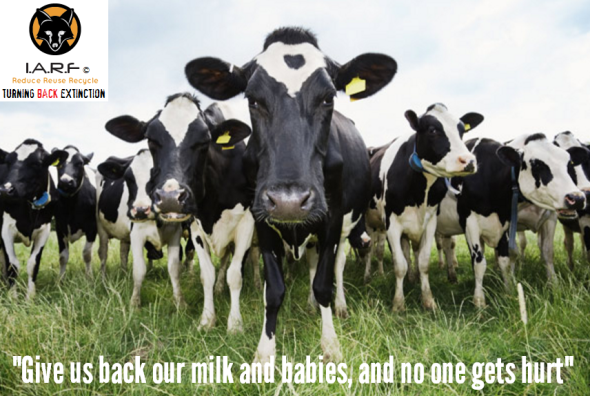
HOW MANY PEOPLE DRINK MILK?:
The global average of whole milk consumption in 2007 was 50kg/capita/yr, the average for cheese was 2.84kg/capita/yr and for butter was 1.32kg/capita/yr (Source: FAOstat). So that kind of (in a mathematical perspective) equates to a staggering amount of milk consumption globally. White people are the biggest milk consumers at some 27.9%, black people 5.2%, and finally Hispanic 9.9%. In all throughout the world, there are more than six billion consumers of milk and dairy products. Over 750 million people live within dairy farming households. Source: http://www.fao.org/docrep/012/i1522e/i1522e00.pdf
That’s a staggering amount of cows that are bred at quite a young age just to produce milk, cheese, butter and other dairy products. Furthermore many people around the world are actually allergic to anything that is “dairy”, some know they are lactose intolerant, while others don’t know and put it down to stomach problems, Irritable Bowel Syndrome, or just gastroenteritis. Overall, about 75 percent of the world’s population, including 25 percent of those in the U.S., lose their lactase enzymes after weaning. The recognition of this fact has resulted in an important change in terminology: Those who could not digest milk were once called “lactose intolerant” or “lactase deficient.”
Virtually all infants and young children have the lactase enzymes that split lactose into glucose and galactose, which can then be absorbed into the bloodstream. Prior to the mid-1960s, most American health professionals believed that these enzymes were present in nearly all adults as well. When researchers tested various ethnic groups for their ability to digest lactose, however, their findings proved otherwise. Approximately 70 percent of African Americans, 90 percent of Asian Americans, 53 percent of Mexican Americans, and 74 percent of Native Americans were lactose intolerant.
1-4 Studies showed that a substantial reduction in lactase activity is also common among those whose ancestry is African, Asian, Native American, Arab, Jewish, Hispanic, Italian, French or Greek. So if you find that after drinking a milky cup of coffee or tea in the morning results in you soon after needing to pass a stool on the toilet, or you suffer gurgling (medical term: borborygmus) within the small and large intestine - its quite likely you are suffering from lactose intolerance. Source: http://www.pcrm.org/health/diets/vegdiets/what-is-lactose-intolerance
HOW IS MILK HARVESTED?:
Many people I’ve questioned over the course of the past six months actually believe both male and female cows produce milk, live happily within a field, and after milking - the cows are kindly (humanely) returned back to the field and all is well. Unfortunately that’s not the case. Ask yourself this question, which is the only species of human that can produce milk, and how is that possible? The answer is simple, the female human is the only human that can produce milk, and for that to happen she must either agree to sexual intercourse to become pregnant, or she is raped, impregnated, and then as explained above - milk is produced nearing the last trimesters of gestation.
So no, male cows (known as bulls) don’t produce milk, only female cows (like female humans) produce milk. A cow is pregnant for approximately 283 days, and produces only one calf. That calf if they are female cannot produce milk at a young age neither - of which they’re known as a “heifer”. Now you’re probably wondering how on earth is it possible for the farming community to continue to keep up with “dairy demand” when a staggering near (six billion consume milk and dairy products, and a single cow is pregnant for 283 days?).
Well being as blunt as I possibly can, and to the point; once the female cow gives birth, the cow is then impregnated again, however farmers cannot wait for a bull to mate with the female cow in most cases, (and for the cow to produce milk once a year she must be pregnant every year too). You may now want to stop eating, and drinking your milky cup of coffee. There are various methods used to “extract sperm from the male bull”. Back in the old days farmers used take the bulls three foot long penises and then masturbate them into a sterile collection jar. Sounds lovely doesn’t it? No it doesn’t!. Source: http://www.independent.co.uk/news/uk/home-news/bulls-semen-10-things-you-didnt-know-1336150.html
Today various collection methods vary in regards to sperm extraction. Some bulls mount frames covered in cowskin and ejaculate into rubber tubes with bottles on the end. Some mount other males, known as “teasers”, only to be interrupted at the crucial moment (which arrives quickly and is over even more quickly) by a man with a rubber tube. Other bulls mount and inseminate females in the natural way, and the semen is then extracted from the cow. When necessary, the bull can be excited artificially, with the help of an aerosol spray which reproduces the smell of a cow on heat. So I guess in a way (this could be seen as sexual abuse of a cow just to provide you with milk, butter, cheese and other dairy products). However its not if we look at it on a “scientific and veterinary medical angle”. I personally though wouldn’t want some strange man jacking me off, would you? …Anyway
…Meanwhile once the farmer or “cow boys” have collected enough semen, this semen is soon injected into the female cow soon after the female cow has given birth. The cow isn’t even given a rest, or a time to recover from her childbirth ordeal. Furthermore the most upsetting part of this trade is when the little one is soon taken away from mother to be killed for the production of “veal”. What you may have believed were happy humanely treated milking cows wandering lazily within the local field - are actually raped cows, used as sex and milk production machines [aka slaves], every year they are forced to breed by humans to provide to some 6 billion dairy consumers - milk!.
Farmers will keep some of the young depending on how many males and females they are holding on their farm. If they are female and some of the elder female cows are nearing their life-cycle of milk production, the elder female cows will be slaughtered, and fed back into the human food chain. So what you may be eating (in the way of healthy and fresh beef) is actually, and mostly overworked milking cows that have been repeatedly raped, or to be scientifically correct “artificially inseminated time again”. Did the cow agree though, did she want to be impregnated again?
Well, think about it, if you was a mother would you want your partner jacking off over you, inside of you or fuc**** you again just to produce more children and milk? No, I didn’t think so. Anyway as explained some of the female and male babies will be kept to keep milk production continuing, unfortunately many will be slaughtered soon after birth, often leaving mother in distress, crying and pining for her little one; and in some rather distressing images I’ve seen on farms, I’ve witnessed mothers chasing after her baby as the farmer abducts her young. That sight almost finished my career within Environmental Science and animal welfare. Furthermore the sight of a maternal cow pining and watching her new born being taking away (for veal production) is pretty traumatic for the cow too.
WHAT HAPPENS TO THE BABY COW:
Firstly veal is the “meat of baby cows” produced mostly from overworked milking cows. Every-year when mother gives birth after 280 days she has to go through the whole ordeal of watching her little one (either male or female) abducted from her (just to provide you with either veal or milk). Pretty horrifying don’t you think? Veal cows are seen as the “surplus of the milking and dairy farming industry”. Baby will be taken away from her mother either a few hours after birth, or a few days after. Source: http://www.whitelies.org.uk/animal-welfare/fate-calves I’m not going to lie, or propagate some melodramatic nonsense, on some farms veal cows will be kept with their mother for longer than a week, that’s about it. The longer the veal cow stays with mother, the more the milk production cycle will be interrupted.
So as your drinking your milk you may want to remember your milk or dairy product has a further added death to it. A baby calf, abducted from the mother, and held within a veal crate (as seen in the image below).
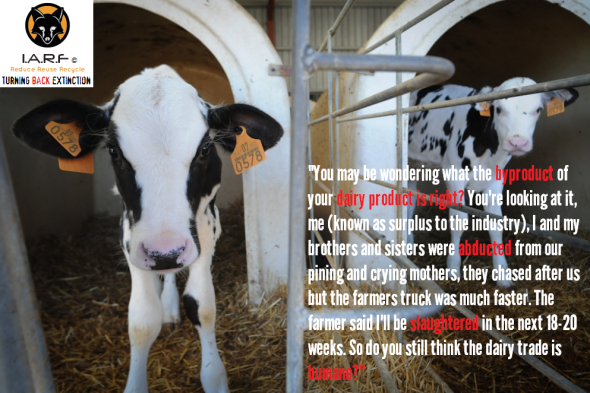
Now as an Environmental, Botanical and Human Scientist I tend to keep away from over exaggerated facts and conspiracies, and the reason I do that is because within Environmental and Human Science if we don’t explain the facts as they are, or provide incorrect and non-factual data, once the public find out otherwise - we’ll rarely be believed or taken seriously again. The image above is 100% factual. Veal cows are seen as (surplus to the dairy and/or farming industry). Veal cows as explained (which you can read in the link above too), are removed from their mothers some hours, a few days or a week after mother has given birth.
From there the veal cows are then held in a veal crate or pen as seen in the image above. In some countries cruel and inhumane veal crates have been outlawed, unfortunately in other countries, they are still being used. You may want to check with your local agricultural ministry in your own county to see if crates are banned or not. The above image is a veal pen, from which baby who’ll be wanting to know where mummy is, and wanting to live like a baby cow will unfortunately be slaughtered for veal meat come 18-20 weeks.
This can be stopped though. How? Quit consuming dairy products, after all 75% of the globes population are actually “lactose intolerance”. Why hurt yourself more, mother and the wee baby? Meanwhile if you’re wondering what a veal crate is, please do watch the video below to understand more on this area of horrific and brutally barbaric agriculture trade just to provide you with milk, cheese, and butter (among other things). The video below originates from a Mercy for Animals undercover investigation in relation to veal farming and the abuse handed out to the little babies. You may find this video upsetting, however it must be shown for you to understand.
WHAT HAPPENS TO ADULT COWS ONCE THEY’VE EXCEEDED THEIR MILK CYCLE?:
To be brutally honest I don’t know what’s more traumatic. Knowing a male bull will be masturbated or excited to produce sperm for insemination and (milk production), a female cow continuously raped every 280 days to produce a new born just for milk to be extracted from the mother for humans; or knowing her wee one is abducted, held within a crate or pen, and killed after 18-20 weeks. There really isn’t a specific traumatic feeling, each and every action is equally as horrifying as one another. The entire dairy industry is sadistic and cruel to the core.
Milk production declines steadily afterwards, until, at about 305 days after calving, the cow is ‘dried off’, and milking ceases. About sixty days later, one year after the birth of her previous calf, a cow will calve again. High production cows are more difficult to breed at a one-year interval.
From THIRTEEN MONTHS (that’s thirteen months) after the female cow has been picked for milk production (and not veal) the primary stages of milking production will begin, meaning that at 13 months the female cow will be artificially inseminated or mated with a bull. The older the cow the poorer milk production is, and lower quality too. Farmers (technically speaking) like their brides young (so to say and excuse the pun).
Domestic cows can live for up to 20 years; however, those raised for dairy rarely live that long, as the average cow is removed from the dairy herd around age four and marketed for beef. So after (four years of being raped time again, and witnessing her young being abducted), four years later she is (after complete exhaustion), killed for meat. So technically and scientifically speaking - when a supermarket advertises fine cuts of beef, healthy beef, or fresh beef - what you may actually be consuming in most cases (as explained above), is in fact overworked milking cows. I often believe when witnessing these adverts on television - its a complete violation of the trades description act.
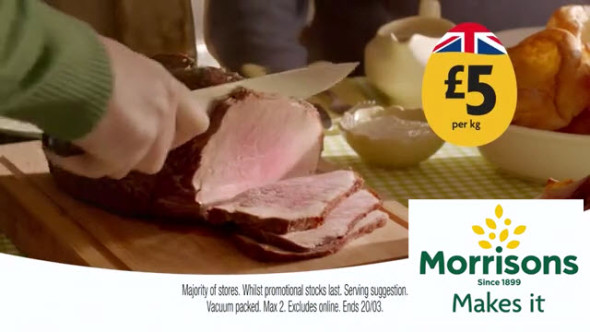
In 2014, approximately 9.5% of the cattle slaughtered in the U.S. were culled dairy cows: cows that can no longer be seen as an economic asset to the dairy farm. These animals may be sold due to reproductive problems or common diseases of milk cows such as mastitis and lameness. Mmm yummy, beef that is filled with diseases, and reproductive problems. But hey, don’t take my word for it. Look up the links too. Source: http://animaldiversity.org/site/accounts/information/Bos_taurus.html Source: http://livestocktrail.illinois.edu/dairynet/paperdisplay.cfm?contentid=354
So that’s basically the life of a dairy cow and her baby; short, overworked, raised in quite abusive and unnatural environments that aren’t projected into the public domain. Often we see images of farmers with happy faces and cows looking incredibly healthy. These images though are what the agricultural and supermarket industry want to project - because it brings in the customer, it sees money parted, products purchased and the longer that trade and false advertising goes on, the longer cows within the dairy, veal and meat industry will be abused moreover.
Its barbaric, horrific, and if the truth was shown within supermarkets and on the television (such as the video below). I can guarantee now that many people would be most certainly put off from buying anything dairy, or eating anything “beef related”. So I question you now: With your cup of milky tea, coffee, your cheese, butter or anything that is dairy related, would you after seeing this video below still consume “dairy or beef products”?.
Watch how the farmer carefully coaxes the little baby away from his mother. Mother is walking in front, while the little day old bay carefully plods along. Motherly and maternal instinct being played out UNTIL. Baby is snatched away. Watch the behavior of mother cow, she tries to save the little one, somewhat alarmed as to why a human is now taking her baby, she follows the farmer wondering where her little one is being taken, she even runs behind the car with little baby in (that is incredibly traumatic and often leaves the cow emotionally distressed for days or weeks on end. Are you still thinking of drinking that milk, or are you going to throw it away and think of a more humane and non-cruel option?).
DO COWS SUFFER FROM PSYCHOLOGICAL TRAUMA WHEN BABY IS REMOVED?:
Many people never realize that ‘animal maternal mothers’ go through the same feelings, and behave the same as ‘human maternal mothers’ do. One only has to view the video above to realize that female cows will behave exactly how human mothers do when their baby is removed, harmed or killed. The scientific and veterinary evidence is there, it proves beyond a doubt that cows suffer exactly the same psychological trauma as human mothers do when they lose their child, or their child is seriously hurt.
Calves are usually separated from their mothers very quickly, sometimes within hours of birth. This is done both to harvest the cow’s milk for human consumption, and also because it’s thought that isolating the calves is safer for them all of which is utter nonsense. If calves are allowed to stay with their mothers after birth, a strong bond develops, weakening slowly as the calf grows older and less dependent on milk, until it is weaned at about eight months old. Abrupt and early weaning, such as occurs on the typical dairy farm, appears to be distressing for both calf and cow, The calves will engage in repetitive crying and become more active, and sometimes you’ll see a decline in their willingness to eat solid food.
As an animal lover, Environmental and Medical Scientist, I find that quite upsetting, in fact it makes me incredibly angry to know that these ungulates are being used, abused and put through emotional and psychological trauma (just to produce milk, veal and meat). Source: http://www.wired.com/2014/06/the-emotional-lives-of-dairy-cows/
Sadly, just like human mothers bond tightly with their newborn babies, so do cows bond with their calves. Mother cows have been reported to bellow for many hours or even days after her calf is taken from her. Author Oliver Sacks, MD discusses a visit that he and Temple Grandin made to a dairy farm: When they arrived, they heard many cows bellowing, causing a very loud and unnerving sound. Temple commented, “They must have separated the calves from the cows this morning,” and indeed, that was exactly the case.
Similarly, Dr John Avizienius, a senior scientific officer at the Farm Animal Department at the RSPCA in Britain, discusses one particular cow that suffered great emotional distress over the separation from her calf: She bellowed for hours, and even after six weeks would hover at the pen door where she had last seen her calf. In a cruel twist of fate, it’s been shown in mammals that multiparous females (those giving birth for the second time or more) have higher levels of oxytocin than primiparous females (those giving birth for the first time.) This means that with each subsequent birth, a mother cow presumably grows more and more bonded to her calves, and it likely becomes more and more emotionally traumatizing for the cow each time a baby calf is taken from her. Do cows suffer psychological trauma when separation takes place? Indeed they do.
THE END OF THE ROAD:
So there you have it, that’s the life of a ‘dairy cow’. Many activists around the globe are trying desperately to end this farming misery, they risk their lives every week trying to stop truck after truck transporting dairy cows to what we call “the end of the road”. If you’re still holding that glass of milk, or thinking of drinking that cup of milky coffee, tea or consuming that dairy product, please do remember that cows don’t live happily within the local fields. The abuse, mental torture and inhumane deliberate acts of abuse often handed down by farm workers is uncalled for, unnecessary, yet all to provide you with a glass of milk, slice of cheese, or knob of butter for your toast or bread Etc.
Four years of rape. four years of emotional distress witnessing baby abducted, and four years of complete misery. Finishing, my last questions are: Do you think this is humane, do you agree that cows and their babies should be treated like this, do you agree that cows should be used as rape and production machines? If the answer is yes, then you’ve clearly not read a single thing within this article. However if the answer is no, then you’re now on the right path helping us and many activists like in the video below to end this horrific trade. The video below depicts that “four year end cycle”, milking cows that have gone through four years of abuse from the age of thirteen months now on their way to slaughter. Source: https://www.facebook.com/electricvegantelevision/
ARE THERE ALTERNATIVE MILKS I CAN CONSUME?:
Indeed there are, in fact not only will you find a wide number of tasty, nutrient and vitamin rich milks, you’ll also notice within ONE DAY after consuming “non dairy milk products”, your bowels beginning to settle down. They’ll be no gurgle, very little bloating, no flatulence, no morning bowel relief, no nausea, and no diarrhoea. When I stopped consuming milk (being the last dairy product I gave up) I will admit that it took a few days to get used to the taste of plant based milks. That was soon overcome though. I tried soy milk first although disliked it, but then that’s me, not you, you may actually like soy milk! What I found with soy milk, is that when adding to coffee the soy milk curdled. I later found though that was due to the temperature of the water, and the amount of soy milk I’d added first.
So I went down to my local hypermarket and purchased a wide range of natural plant based milks which I’ve listed below for your information. You’ll find in drinks such as coffee, or teas that you’ll need to add more plant based milk over that of cows milk. However its not really that much. Once you manage to garner the correct quantities all is good. Below are some of the milks I’ve tried, my preferred milk though is rice milk.
- Rice milk. (good for coffee, tea and smoothies)
- Coconut milk. (excellent for cooking vegetable Asian curries)
- Oat milk.
- Hemp milk.
- Soy milk.
- Almond milk.
- Barley milk.
- Spelt milk.
- Lupin milk.
- Pea milk.
- Cashew milk. (great for an alternative taste to Italian coffees Etc)
- Hazelnut milk.
- Chia milk.
In all there are EIGHTEEN different natural plant based milks (that I know of) that are on the market, furthermore these natural milk products last longer when open and refrigerated than cows milk, and are more easy on the pocket too - because they last longer. All eighteen plant based milks are easy on the tummy (as explained) and excellent at reducing gastrointestinal upsets. No animal is harmed during the processing of these milks, because no animal is involved. You can even grow the plants above that produce these milks in your own garden. Its really as simple as that. Check the video our below.
THE ENVIRONMENT?:
You may not know this, but cows are actually the biggest methane emitter on the planet - all of which contributes to increasing our global air temperature, and increasing climate change. Source: http://www.ipcc-nggip.iges.or.jp/public/2006gl/pdf/4_Volume4/V4_10_Ch10_Livestock.pdf and as I continue to state, please don’t take just my word for it, check the medical, scientific, and environmental scientific links out too.
Agriculture is responsible for an estimated 14 percent of the world’s greenhouse gases. A significant portion of these emissions come from methane, which, in terms of its contribution to global warming, is 23 times more powerful than carbon dioxide. The U.S. Food and Agriculture Organization says that agricultural methane output could increase by 60 percent by 2030 [Source: Times Online]. The world’s 1.5 billion cows and billions of other grazing animals emit dozens of polluting gases, including lots of methane. Two-thirds of all ammonia comes from cows.
Can you now see why I am writing this article, not just to get across to many dairy consumers and beef eaters that cows are treated barbarically. But also to prove (which I have done countless times), that consuming beef, and dairy products is actually, seriously, damaging our environment.
Cows emit a massive amount of methane through belching, with a lesser amount through flatulence. Statistics vary regarding how much methane the average dairy cow expels. Some experts say 100 liters to 200 liters a day (or about 26 gallons to about 53 gallons), while others say it’s up to 500 liters (about 132 gallons) a day. In any case, that’s a lot of methane, an amount comparable to the pollution produced by a car in a day.
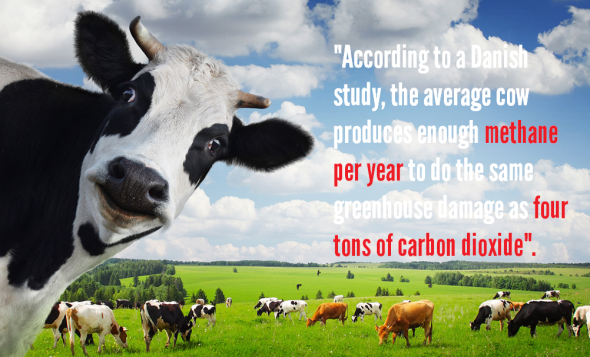
According to a Danish Study conducted back in 2014 for the Intergovernmental Panel on Climate Change cows do emit enough methane per year to do the same damage as FOUR TONS of carbon dioxide. Source: http://www.todayifoundout.com/index.php/2014/04/cow-farts-really-significantly-contribute-global-warming/
At the end of the day I’m just a Botanical, Environmental and Human Scientist with decades of experience within this sector of human, animal and environmental science. I’m not telling you or ordering you what to do, however I am providing to you the facts, of which its down to you whether or not to digest these facts and take action, or to ignore. I do hope that this article is shared far and wide, as well as encouraging many people to make changes to their lifestyle, and to end this so called humane farming of cows - of which is nothing but absolute horrific, nor is it “humane”.
I would just like to correct misinformation here that seems to be going around the animal rights community, I’m not entirely sure why, maybe somethings are done differently in certain countries, however in all farms I have visited, and examined; both “female and male” baby cows are removed from their mother of which as explained above this is called “surplus to the industry”. At times males will be kept if there is a need for further bulls, and at times females will be kept if there is need for fresher milking cows. However if a farmer cannot expand his or her farm or doesn’t require “surplus cows” both females and males will be sold on as veal. Please don’t read and believe everything on the internet, and try to stay focused on “proven and more than academic science”.
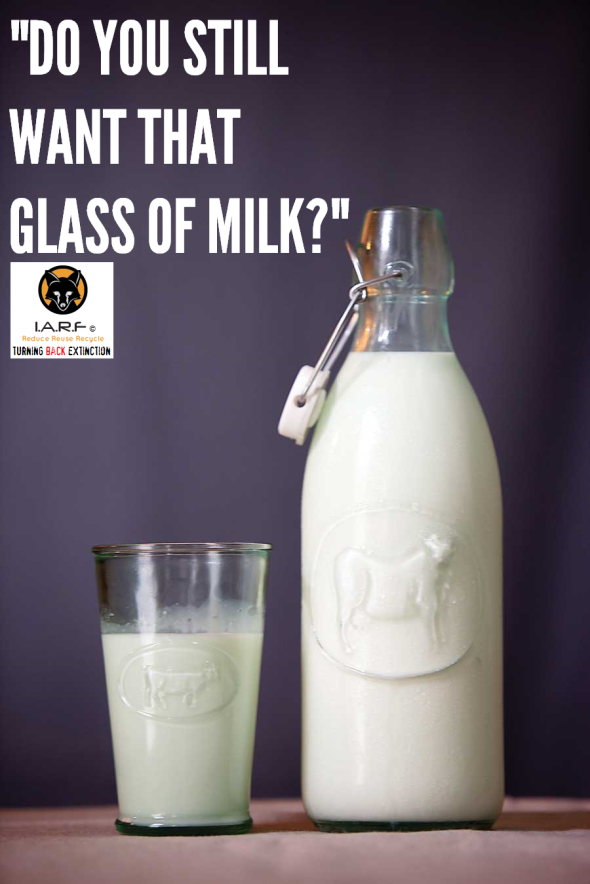
Thank you for reading.
To find our more on “non meat consumption visit our coalition partners site here on Facebook
Dr Jose C. Depre PhD. MEnvSc. BSc(Hons) Botany, PhD(NeuroSci) D.V.M.
Environmental & Human Science



that is so sad that cows big and small suffer for us humans
August 12, 2016 at 6:25 am